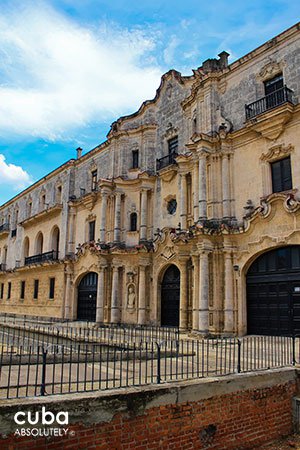In 1689, Bishop Diego Evelino de Compostela founded San Ambrosio, an unpretentious school for boys, located on Tejadillo Street and adjacent to the Jesuit church under construction at the time. When the Jesuits’ properties were confiscated in 1767, Bishop Echevarría visited San Ambrosio School, added “San Carlos” to its name in honor of King Carlos III of Spain, and the following year upgraded it to Council Seminary. From that moment, a strong competition began with the Real y Pontificia Universidad founded by Brother Gerónimo Valdés at the San Juan de Letrán convent established in 1578.
Both were universities whose alumni included illustrious founders of the Cuban nation and of its culture. In 1950, an imposing façade which overlooks the bay was built, imitating the peculiar Baroque style of the Catedral de La Habana. The seminary’s original façade was on San Ignacio Street, which today has a modest altarpiece reminiscent of the Churrigueresque style, which serves as entrance.
This construction is considered by many architects one of the most important buildings of the colonial period because, at the time, it introduced ground-breaking architectural elements. It has one of the most tranquil courtyards in the city and a fantastic library. Renowned Cuban intellectuals José de la Luz y Caballero and Félix Varela were among its alumni.











 Other
Other




